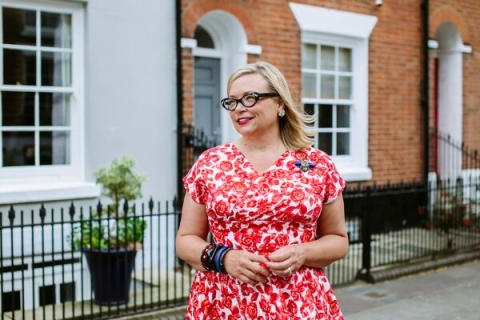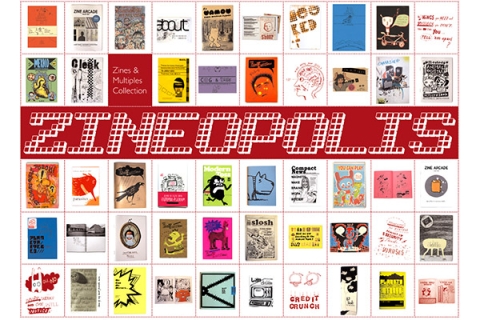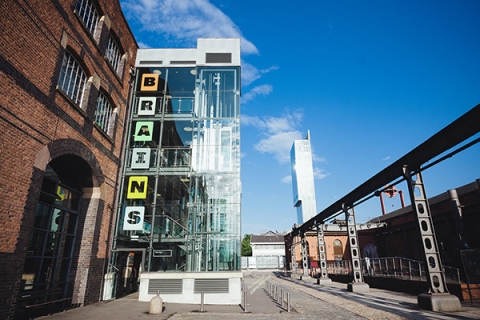Art and Design research in the Faculty of Creative and Cultural Industries (CCI) expanded significantly in breadth and depth as a result of focused strategic development and investment since 2014. As a result, this is our first submission to UoA32 since 2008.
All four of the Schools in CCI submitted staff to the Unit:
- School of Architecture: architectural, urban and interior design; history and theory; heritage and conservation.
- School of Art, Design and Performance: art and design history; curatorship; fashion and textile design futures; graphic and data visualisation design; illustration; photography.
- School of Creative Technologies: animation; creative and immersive technologies; digital humanities; human experience and interaction design; gaming.
- School of Film, Media and Communication: film practice.
Our researchers represent a broad range of history, theory and practice across art and design that offers an interdisciplinary understanding that reaches into allied areas of the media, communication and the built environment. Their work presents a diversity of outputs that include monographs, journal articles and conference proceedings, as well as practice research including artworks, images, exhibitions, installations, buildings and architectural designs, film and animation, software and digital applications.
There was substantial growth in the volume and diversity of income to our Unit from external sources over this REF period. Annual research income increased by nearly 3,000% from £21,010 in 2014 to £646,788 in 2020. Income ranged from smaller-scale individual projects to joint funding bids to multi-partner projects. Our Design Innovation cluster’s participation in complex, consortium-based international research programmes has been key to our income growth from the European Regional Development Fund (EDRF). Interdisciplinary projects conducted under the umbrella of the Cluster for Sustainable Cities have increased external income with successful bids to the British Council, Economic and Social Research Council (ESRC), EDRF, Interreg 2 Seas and others. It has been recognised that we have an internationally excellent research environment.
Results in REF 2021
- 65% of our research outputs were judged to be internationally excellent or world-leading.
- 66.7% of our impact was rated as having very considerable or outstanding reach and significance.
- 100% of our research environment was judged as having the vitality and sustainability to produce internationally excellent or world-leading research.
Research areas
The establishment of three overarching research clusters has facilitated the development of our interdisciplinary research.
The interdisciplinary Cluster for Sustainable Cities, with over 35 researchers and their students, works at the interface of sustainable architecture, urban design, planning, social sciences, information and communications technology and engineering. Our research provides real-world solutions for challenges aligned with the Sustainability and the Environment research theme and also contributes to the Health and Wellbeing research theme.
Our Design Innovation cluster developed significant interdisciplinary research aligning with the Health and Wellbeing research theme. Design innovation projects also address social inequalities and explore cultural identities through creative practice research, advancing the Democratic Citizenship research theme.
Our new Centre for Creative and Immersive Extended Reality (CCIXR) builds on our track record of interdisciplinary projects combining creative and immersive extended reality with arts and humanities research, which contribute to the University’s Future and Emerging Technologies research theme.
Impact case studies
We submitted three impact case studies demonstrating the world-leading reach and significance of our research in the following areas:

House histories: A House Through Time - Shaping a flagship TV series to achieve critical and financial success and inspiring the public to engage with house history
Research on house history conducted by Professor Deborah Sugg Ryan led to her influential role as consultant historian and ‘super contributor’ to all three series of BBC Two’s A House Through Time. Her research shaped the programme, contributing to the broadcasting success and global reputation of a UK-based production company. The series brought critical acclaim and huge audiences averaging 2.73 million and up to 4.16 million, influencing the brand success of BBC Two. The series stimulated enquiries from British adults seeking to connect their stories of home and family with place and nation. It increased public interest and brought new audiences for house history to genealogy websites, archives and libraries. Through engagement on social media, it built and preserved the house history knowledge base for professional and non-professional historians.

Contemporary creative practice research: securing the future for ‘art-zines’ and artists’ books
Dr Jackie Batey’s internationally recognized art-illustration practice-based research has influenced the development of independently-published artists’ books and ‘art-zines’ as distinctive creative forms. The work has shaped institutional approaches to their acquisition and preservation and widened accessibility to these ephemeral forms of creative practice. Batey’s construction of a field-defining digital research and dissemination platform for art-zines has increased participation and visibility of non-academic artists. Her research led directly to curatorial engagement with world-leading institutions and significantly influenced the scope of permanent collections of 89 national and international museums, archives and art institutions, forming an important new historical record and resource.

Curatorship: Brains to Biennale — bridging art and science to build audiences and develop artists
Dr Marius Kwint is a cultural and art historian whose curatorial research practice has significantly enhanced the public profile of institutions and individual artists with whom he has worked. His 2012 Wellcome Collection exhibition Brains: the Mind as Matter broke house records for visitor numbers and had online engagements in the millions. This led to Kwint being appointed to re-curate it for Manchester’s Museum of Science and Industry in 2013-14, to spearhead a programme of building new audiences. Established and emerging artists have additionally benefited from Kwint’s curatorial collaboration and writing since he has featured them not only in Brains, but also in the global contemporary art arena, notably the 2015 Venice Biennale official collateral exhibition Frontiers Reimagined: Art That Connects Us.
Photo by www.highcontrast.co.uk, courtesy of Science and Industry Museum, Manchester.
Collaborations and partnerships
We strengthened collaborations that underpin the production, preservation and display and public engagement with contemporary and heritage collections, which resulted in our three impact case studies (see above).
We’ve been recognised for our excellent relationships with key stakeholders. We're involving them in the co-design and delivery of our research to develop resilient and sustainable communities to enhance health and wellbeing and democratic citizenship. This resulted in a number of impactful ongoing projects, such as:
- PONToon: Partnership Opportunity using New Technologies fostering sOcial and ecOnomic inclusioN, centred around community development, social and economic inclusion and equality. Established as a consortium of UK and French partners — including Aspex Visual Arts Trust, Portsmouth (Arts Council England - National Portfolio Organisation), Devon Mind, and Amiens Metropole — the project explored the design and interface of creative technologies in support of social inclusion and empowerment of socially marginalised young women.
- CRUNCH: Climate Resilient Urban Nexus Choices, an international interdisciplinary project led by the University of Portsmouth, funded by the Sustainable Urbanization Global Initiative (established by the Belmont Forum and Joint Programming Initiative Urban Europe), to bring together fragmented global research and expertise to find innovative solutions to the challenges of the Food-Energy-Water nexus (FEW). The project comprises a multidisciplinary group of academics from the UK, the Netherlands, Poland, Sweden, Taiwan and USA.
Infrastructure and facilities
The unit is housed in the University's refurbished Eldon Building and supported with investment in facilities to ensure the ongoing vitality and impact of its work. This includes television and motion capture (MoCap) studios, and a cinema used for teaching, research and public engagement events.
We’ve developed our physical research environment considerably by securing investment to support our strategic ambitions. Building on the existing facilities and strong research and teaching track record of Creative Technologies, CCI won £3.6 million from Solent Local Enterprise Partnership for a new Centre for Creative and Immersive Extended Reality (CCIXR) providing state-of-the-art XR labs and multimedia facilities.
CCIXR builds on our track record of interdisciplinary projects combining creative and immersive extended reality with arts and humanities research, which contribute to the University’s Future and Emerging Technologies research theme. The facility features cutting-edge technologies including photogrammetry, volumetric capture, and virtual production technology. We have newly updated motion caption facilities, a VR lab, recording studios and a digital coding space. Our three new music studios incorporate world-class equipment including a Neve Genesis mixing desk and a Dolby Atmos system. These world-leading facilities will have an invaluable impact on our research in human interaction design and medical applications, as well as artistic, design, curatorial, heritage, spatial, and architectural practice. They will also drive future income.
